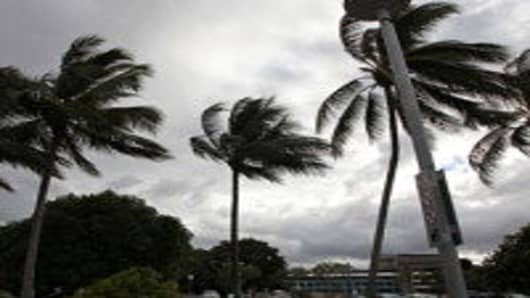El Nino and La Nina have a lot to answer for. And we're not talking about two naughty kids.
Weather pattern El Nino brought Australia a crippling drought for nearly decade. La Nina has taken its place with decidedly strong and wet force. Witness the recent fatal flooding and a cyclone bigger than Hurricane Katrina.
And now, people in the state of Queensland are being told they should brace themselves for more—with La Nina forecast to last into the second quarter.
Beyond the devastating loss of life and livelihoods, why should we care about the impact of these Australian natural disasters? The answer is simple, and very clear on the rioting streets of Egypt: commodity price inflation.
World food prices hit their highest level ever in January, and the UN food agency says they're set to keep risingfor months.
Sugar prices hit 30-year highs this week as Cyclone Yasi decimated many of Queensland's sugarcane fields. Australia is the world's third-largest sugar exporter.
Trade group Canegrowers of Australia says some growers have lost everything—houses, crops and machinery—and that the ensuing supply shortage will drag over many years because sugarcane is a multi-year crop. Bad news for consumers of sugar, especially when prices are already high due to production problems in China and Thailand and falling exports from India.
The same goes for banana crops, with initial estimates suggesting Yasi may have wiped out as much 90 percent of the banana crop. In addition, it will take 12 to 18 months before full production can be restored.
Five years ago, when Queensland's banana crop was flattened by Cyclone Larry, banana prices soared as high as $15 a kilogram, against pre-cyclone prices of $2 to $3 a kilo. The same may happen again.
Among other commodities affected, copper and tin prices have also reached new highs. And while the Aussie coal industry was largely spared by Yasi, many mines closed as a precaution.
Clearly, the cyclone added insult to the injury already caused by the January floods. Prices for thermal coal (used to power coal plants) jumped nearly 30 percent to over $140 per tonne in mid-January from about $110 per tonne at the start of the year.
To give you a feel of the scale, Queensland state is the world's largest producer of coking coal, which goes into steel, an export industry worth $30 billion a year, thanks to global miners BHP Billiton , Rio Tinto and Xstrata.
How long will prices stay high? And how great is the impact on global commodity prices from Australia's natural disasters? Those, my friends, are questions our panel of experts will answer today on Street Signs.
For more details and analysis of commodity prices, watch Mandy Drury's report on Street Signs at 2pm ET.



